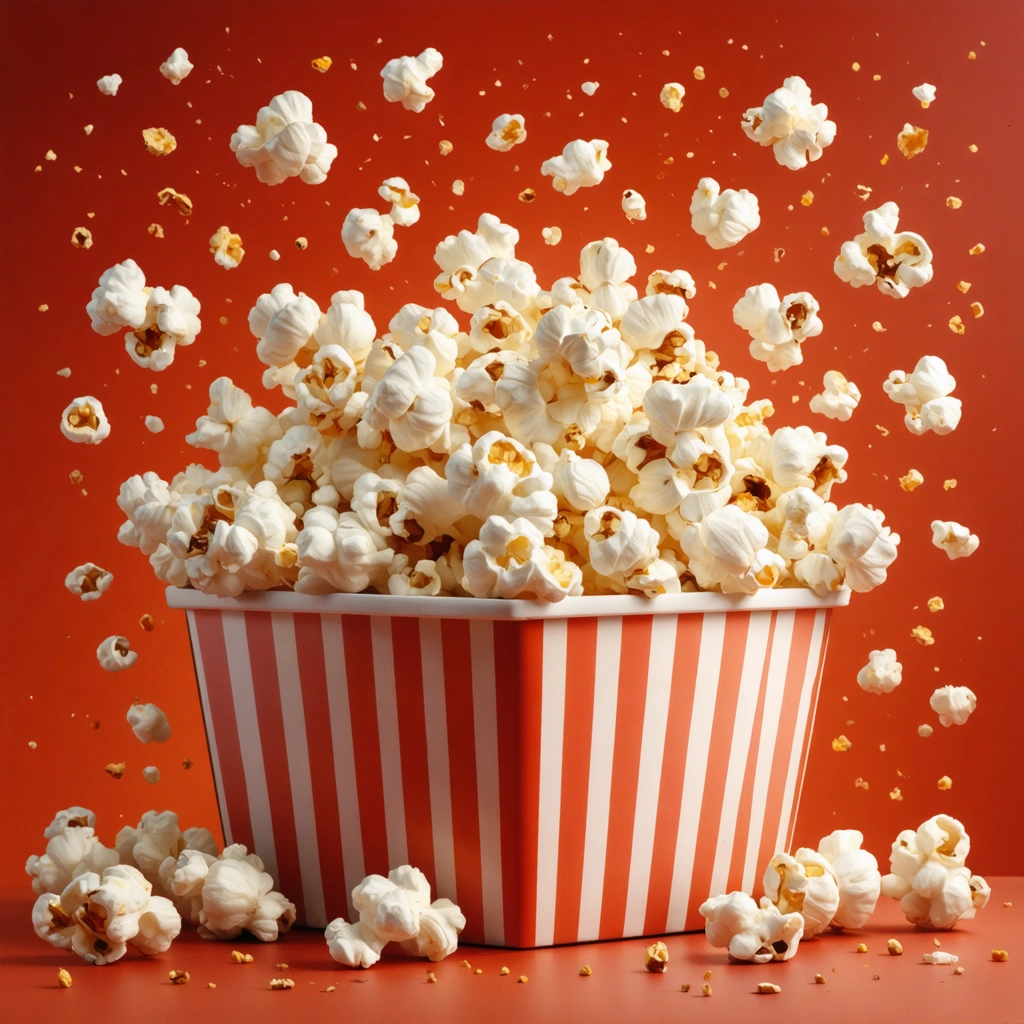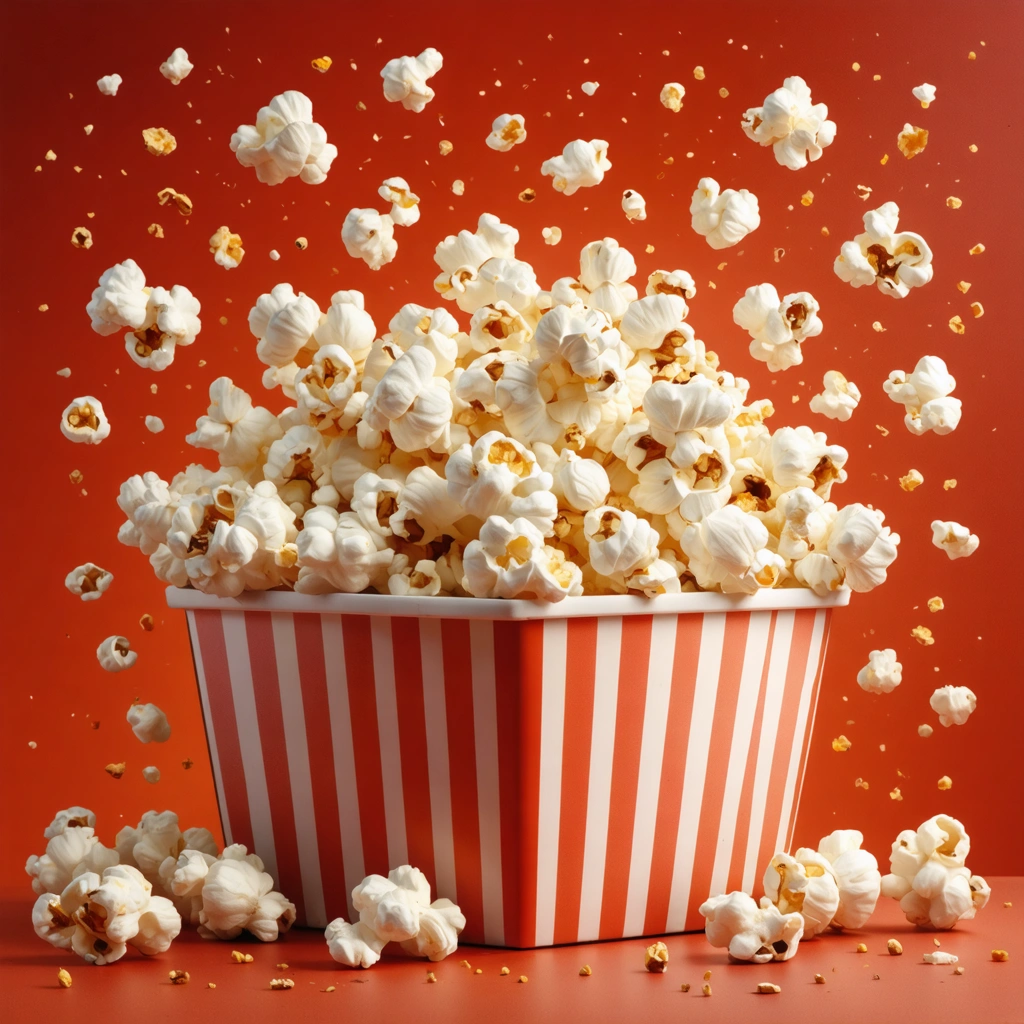
The Ubiquitous Charm of Popcorn: More Than Just a Movie Companion
Think about the last time you settled in for a movie night or a casual get-together. Chances are, a bowl of popcorn was somewhere in reach, quietly stealing the spotlight. Popcorn, or pop corn as some affectionately call it, isn’t just a snack—it’s a cultural icon that has traveled far beyond the cinema halls to become a beloved treat worldwide. But what exactly makes this humble puffed kernel so irresistibly popular? The answer lies in its incredible versatility, its comforting crunch, and its ability to adapt to countless flavors and occasions.
Yet, while popcorn’s rise to global stardom seems effortless, its journey—and the conversation around it—isn't without complexity. As popcorn continues to dominate snack aisles and kitchen counters, there’s a growing awareness about some lesser-known issues tied to its consumption and production. One such concern that has sparked debates is “popcorn lung,” a condition linked to certain artificial flavorings used in microwave popcorn. This raises critical questions about how we enjoy our favorite snack and what that means for our health.
Popcorn’s Double-Edged Legacy: From Delight to Debate
Popcorn’s popularity is undeniable. From the cozy comfort of home to bustling fairs, from artisanal food markets to industrial snack manufacturers, popcorn’s appeal is universal. But as more people indulge in this crunchy delight, the spotlight has also fallen on the safety of some popping methods and additives. Have you ever wondered what exactly goes into that buttery bag of microwave popcorn? Or why “popcorn lung” has become a buzzword among health-conscious consumers?
“Popcorn lung,” medically known as bronchiolitis obliterans, is a serious respiratory condition linked to inhaling diacetyl—a chemical once commonly used to impart a buttery flavor in microwave popcorn. Though rare, this condition has led to increased scrutiny of food additives and workplace safety in popcorn manufacturing. Suddenly, a snack that seemed harmless is wrapped in a cloud of caution, prompting both consumers and producers to rethink how popcorn is made and enjoyed.
This tension between popcorn’s beloved status and health concerns creates a compelling narrative: how can a snack so deeply ingrained in global culture continue to thrive without compromising safety? How can the snack industry innovate while respecting consumer well-being? And most importantly, can popcorn’s versatility be harnessed in ways that celebrate its charm while addressing these modern-day challenges?
Why Popcorn’s Versatility Keeps It on Top
Despite these challenges, popcorn’s reign as a snack superstar is far from threatened. In fact, its adaptability is what fuels its enduring success. Whether you prefer it salty, sweet, spicy, or savory, popcorn caters to every palate. Chefs and home cooks alike experiment with exotic spices, artisanal salts, and gourmet coatings, transforming simple pop corn into a canvas of creative expression.
Moreover, popcorn’s appeal extends beyond flavor. It’s naturally gluten-free, low in calories compared to many snacks, and can be made without artificial additives, making it a favorite among health-conscious eaters. And as consumers increasingly seek sustainable and minimally processed foods, popcorn’s simple origins—a kernel and heat—fit perfectly into modern food trends.
In the sections ahead, we will explore popcorn’s fascinating history, the science behind the perfect pop, and the ways it continues to evolve in snack culture worldwide. We’ll also delve into health considerations, including the popcorn lung topic, to provide a balanced view that empowers you to enjoy popcorn responsibly and creatively. So grab your favorite flavor and join us as we unravel the story behind snack culture’s undeniable star.

Popcorn: Snack Culture’s Star and Its Global Versatility
Why Has Popcorn Become Such a Popular Snack Worldwide?
Popcorn’s rise as a beloved global snack is rooted in its unique combination of convenience, flavor versatility, and cultural adaptability. Unlike many other snacks, popcorn is simple to prepare, affordable, and can be customized to suit a wide range of tastes—from salty and buttery to sweet and spicy.
Historically, popcorn dates back thousands of years, with evidence of popped kernels found in ancient Americas. Its modern popularity skyrocketed in the 20th century due to innovations like microwave popcorn and its association with movie theaters, turning it into an iconic snack for entertainment.
Popcorn’s appeal crosses cultural boundaries because it can be adapted easily. For example:
- In the United States, classic buttered popcorn remains a staple.
- In Japan, popcorn is often seasoned with soy sauce and seaweed flavors.
- In India, spicy masala-flavored popcorn is popular.
- Sweet caramel popcorn has a significant fan base in many Western countries.
These variations highlight popcorn’s ability to thrive in different snack cultures, fueling its reign as a global favorite.
What Makes Popcorn So Versatile Compared to Other Snacks?
Popcorn’s versatility is driven by its simple base ingredient—dried corn kernels that pop when heated—and its neutral flavor profile before seasoning. This allows manufacturers and home cooks to experiment endlessly with flavors, textures, and even nutritional profiles.
Key factors contributing to popcorn’s versatility include:
- Flavor adaptability: Popcorn easily takes on sweet, savory, spicy, or even exotic seasonings.
- Texture variations: It can be light and airy, dense and chewy (as in kettle corn), or coated with crunchy toppings like caramel or cheese powders.
- Health options: Plain popcorn is a low-calorie, whole-grain snack rich in fiber, which appeals to health-conscious consumers.
- Packaging innovations: From microwave bags to gourmet tins, popcorn fits well into various marketing and consumption models.
This adaptability is why popcorn remains a staple in both casual snacking and gourmet food markets, continuously expanding its audience.
Is There a Health Concern Called “Popcorn Lung”? What Is It and Should Consumers Worry?
“Popcorn lung” is a lay term for bronchiolitis obliterans, a rare but serious lung disease characterized by scarring of the small airways, leading to coughing, wheezing, and shortness of breath. The condition gained public attention due to its association with workers exposed to high levels of diacetyl—a chemical once commonly used to give microwave popcorn its buttery flavor.
However, it is important to understand the context and risk:
- “Popcorn lung” primarily affected factory workers who inhaled large amounts of diacetyl vapor over prolonged periods, not consumers who eat popcorn.
- Due to safety concerns, many manufacturers have significantly reduced or eliminated diacetyl from their products.
- Eating popcorn or popping it at home using standard ingredients does not pose a risk of popcorn lung.
- Consumers should be cautious with inhaling artificial flavoring vapors (such as from e-cigarettes) where diacetyl may still be present.
In summary, popcorn remains a safe and enjoyable snack, but awareness of popcorn lung highlights the importance of food safety regulations and ingredient transparency in the snack industry.
How Is Popcorn Produced and What Industry Trends Are Shaping Its Future?
Popcorn production begins with specialized varieties of corn that have a hard moisture-sealed hull and dense starchy interior. When heated, moisture inside turns to steam, causing the kernel to explode and turn inside out.
Key stages of popcorn production include:
- Growing and harvesting popcorn-specific corn varieties.
- Drying kernels to optimal moisture content (around 13-14%).
- Packaging for retail or bulk use, including microwaveable bags.
- Flavoring and seasoning in manufacturing or by consumers at home.
Current industry trends influencing popcorn’s future include:
- Health and wellness: Demand for organic, non-GMO, and low-calorie popcorn options is increasing.
- Innovative flavors: Global fusion flavors and gourmet ingredients are expanding the market.
- Sustainability: Environmentally friendly packaging and responsible sourcing are gaining importance.
- Technology integration: Smart appliances and on-demand customization are starting to appear in popcorn preparation.
These factors are likely to keep popcorn relevant and exciting as snack culture evolves worldwide.
What Are Common Questions About Popcorn Consumption and Preparation?
When people search for information on popcorn, they often want practical advice on preparation, health impacts, and sourcing. Common inquiries include:
- How to make the perfect popcorn at home? Tips include using the right oil, controlling heat, and seasoning after popping.
- Is microwave popcorn safe? Modern microwave popcorn is generally safe, but consumers might prefer brands with fewer additives.
- Can popcorn be part of a healthy diet? Yes, when prepared without excessive butter or salt, popcorn is a whole grain and a good source of fiber.
- What are alternatives to traditional popcorn flavors? Exploring spices, cheeses, chocolate, and international seasonings offers creative snacking.
Understanding these nuances helps consumers enjoy popcorn to its fullest potential while aligning with their tastes and lifestyle choices.



